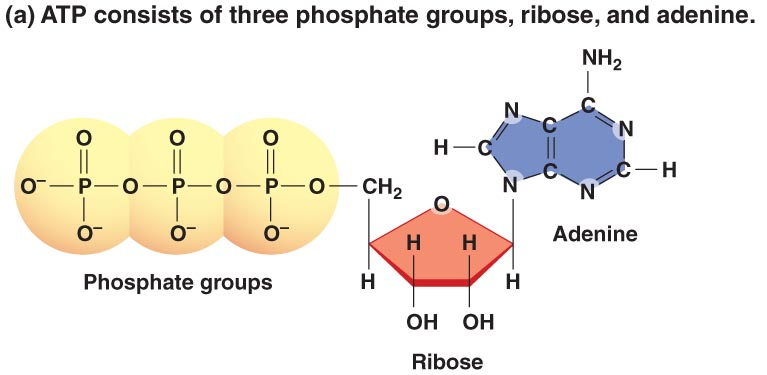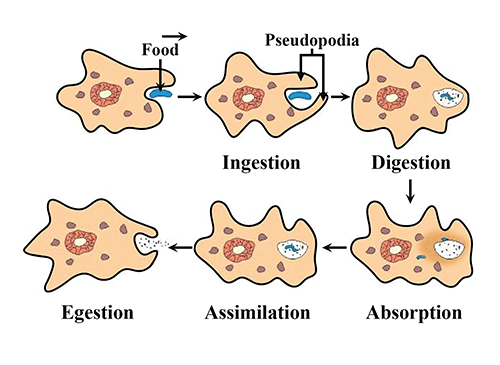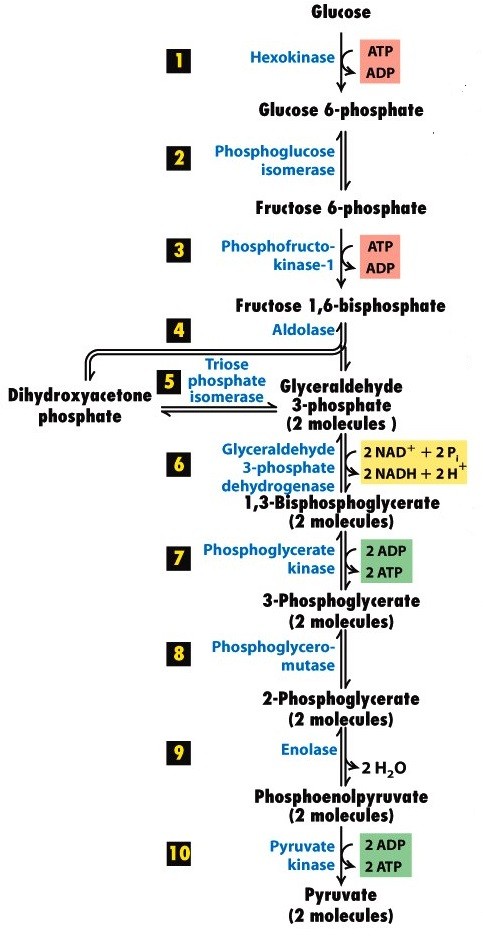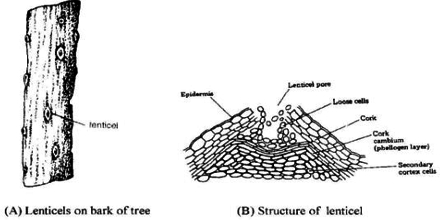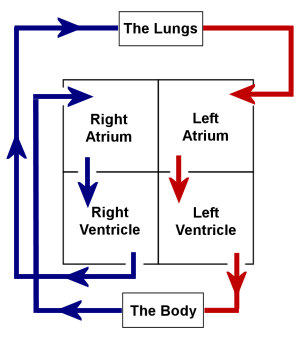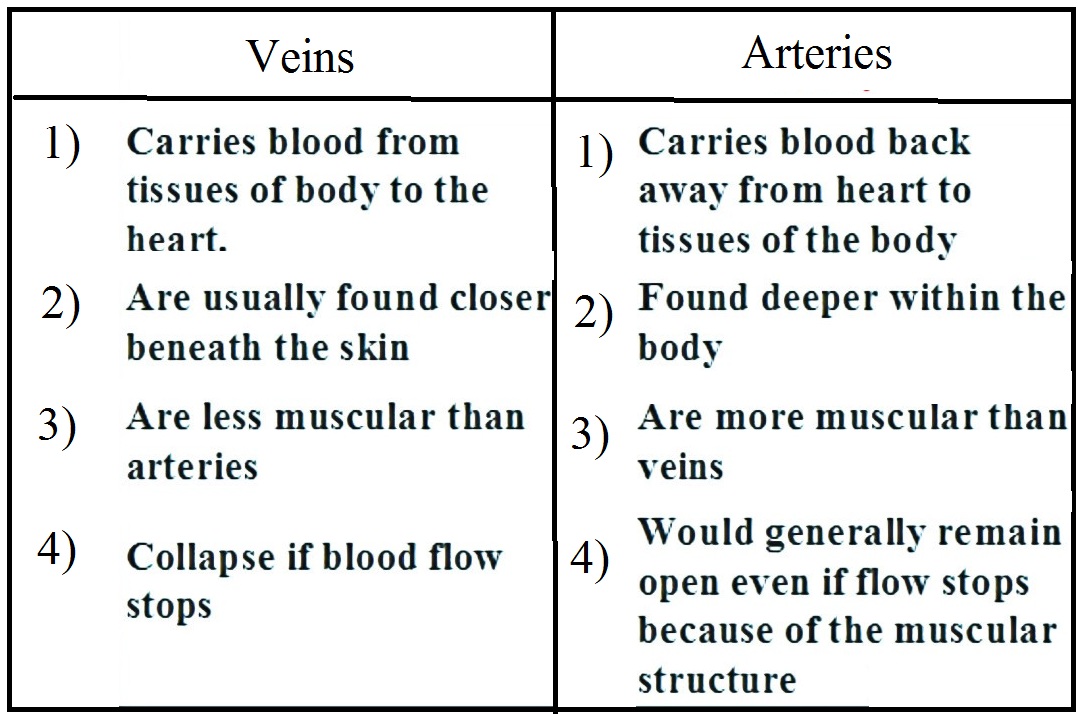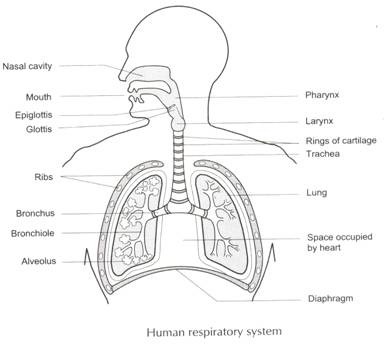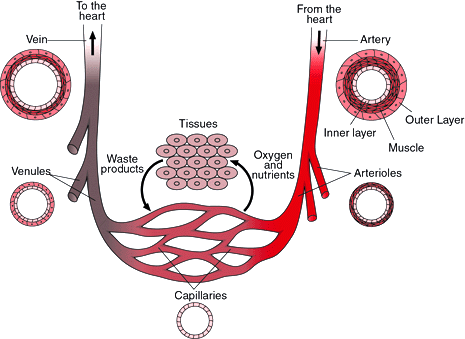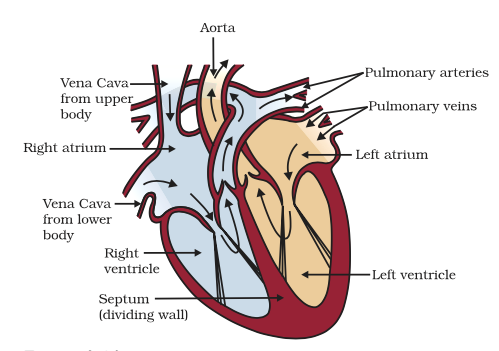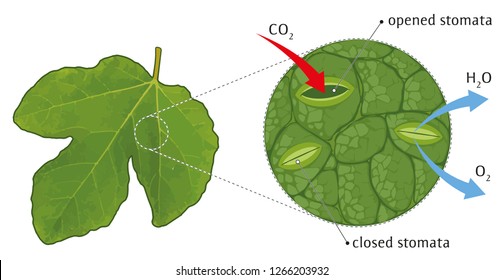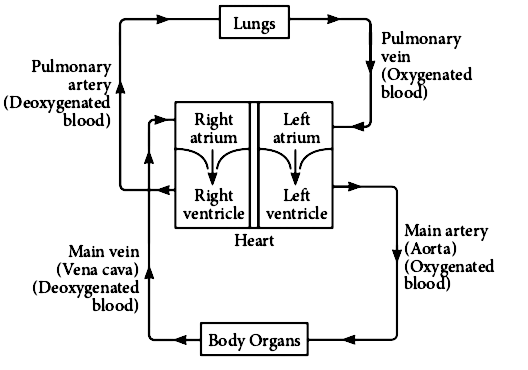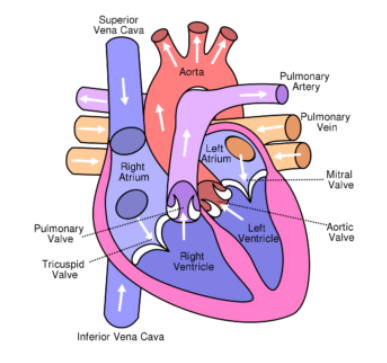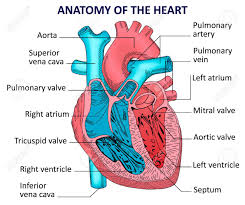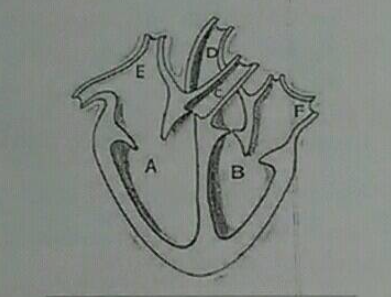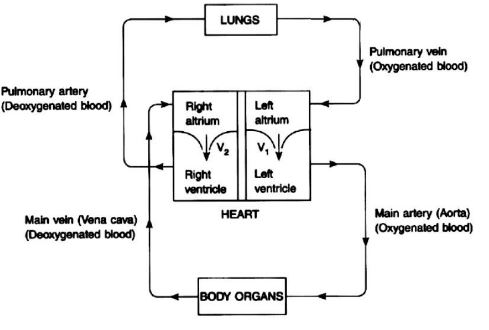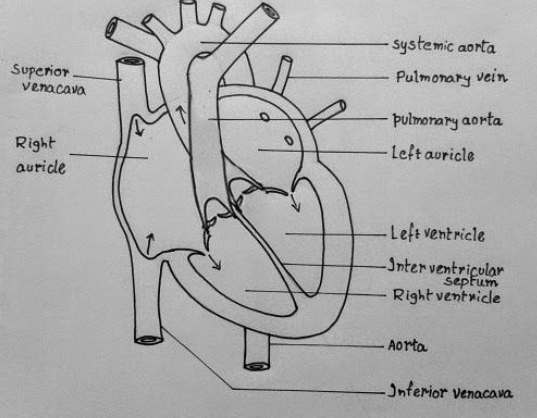Life Processes - Class 10 Biology - Extra Questions
Choose the correct answer from the alternatives given in the brackets.
The xylem in the plants are responsible for ___________.
(transport of water, transport of food, transport of aminoacids, transport of oxygen)
What is transpiration? Where does it occur?
Study the following model with which the transpiration mechanism in plants can be demonstrated. With which structure of the plant do you compare each of the following?
(i) Sponge
(ii) Glass tube filled with water.
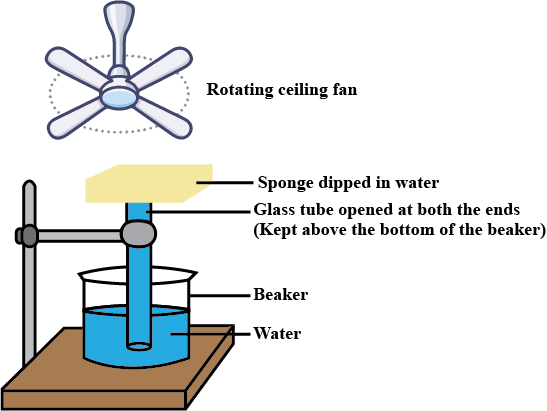
Name the main artery which takes the blood from the heart to different parts of the body?

Which chamber of the heart receives deoxygenated blood from the body?

Fill in the-blanks with suitable terms given below:
(Fast, Leaves, Stomata, Closed, Transpiration, Humid)
The leaves have more .......... on their lower surface.
Given below are five terms. Rewrite the terms in the correct order to be in a logical sequence with regard to photosynthesis:
(i) water molecules, (ii) oxygen, (iii) grana, (iv) hydrogen and hydroxyl ions, (v) photons.
Name any four life processes:
Explain the following term:
Diastole
Why do people have a common belief that the heart is located on the left side of the chest?
Which processes would you consider essential for maintaining life?
List three events that occur during the process of photosynthesis. State in brief the role of stomata in this process.
List three events that occur during photosynthesis process.
(i) Some forms of life do not depend upon oxygen. Explain.
(ii) Explain the various forms in which carbon is found on the Earth.
(iii)What is respiration?
What are the cellular components of blood?
What are gums made of? Is Fevicol different?
How are the minerals absorbed by plants?
Which materials are excreted by kidneys and lungs?

What is blood pressure? Name the instrument used to measure it.
Loss of water from the plant is known as ascent of sap. Is it true or false?
Name two main reactions that occur during the the process of photosynthesis.
During the journey of food from mouth to stomach through oesophagus. How muscular system coordinate in this process?
Give the biological term for 'Blood vessels carrying blood to the left atrium'.
Imagine what happens if waste materials are not sent out of the body from time to time?
Bring out the differences between right auricle and left auricle.
Complete the following sentence by filling the blank with a suitable word(s):
The oxygen-rich blood from the lungs comes into the _____ of the heart.
What happens if there is no mucus in the Oesophagus ?
Blood pressure of a person is measured by
Expand ATP.
Bile juice contains no digestive enzymes. Yet it is important for digestion. How?
What is hypertension? How is it caused? Mention the preventive steps to be taken.
Answer the following.
(i) Name the vascular tissues labelled A and B.
(ii) What materials are transported through A?
(iii) What materials are transported through B?
(iv) How do the materials in A move upwards to the leaves?
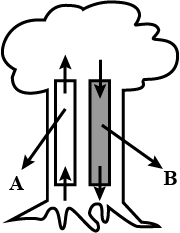
What is respiration? Write the detail note on human respiratory organs.
Explain with the help of a diagram as to how amoeba obtains nutrition.
What is respiration? Explain the types of respiration.
Explain saprozoic and parasitic nutrition.
What are veins?
What is blood? Write down four functions of blood.
Arteries and veins are joined by a network of _________.
The blood from the heart is transported to all parts of the body by the ________.
How does the bile help in the digestion of fat?
Give the biological reason for the following statement:
The left ventricle of the heart has a thicker wall than the right ventricle.
What is respiration? How are respiration and burning similar and how are they different?
Complete the following sentence by filling the blanks with the suitable word(s).
The blood loaded with carbon dioxide from the body comes into the _______ of the heart.
Mention one difference between the following on the basis of what is given in brackets.
Chlorophyll and chloroplast (part of plant cell).
Give reasons for the following:
Atrial wall is less muscular than the ventricular wall.
Short / Long answer type questions.
Write an essay on the composition of blood.
Very short answer type.
Name one function of saliva other than in digestion
Fill in the blanks with appropriate words.
In respiration, the exchange of gases occurs by the principle of ..........
In respiration, the exchange of gases occurs by the principle of ..........
Fill in the blanks:
Transpiration is the loss of water as water ............ from the .............. parts of the plant.
Very short answer type.
Which light is the most effective for photosynthesis?
Very short answer type.
What is the source of oxygen evolved during photosynthesis?
Does vasoconstriction or vasodilation lower blood pressure ?
Short / Long Answer Types :
What is respiration? Describe the various steps resulting in the oxidation of carbohydrates to pyruvic acid. How many ATP are produced in glycolysis?
What is the mean blood pressure in the aorta?
Very short answer type.
Moll's experiment demonstrates the necessity of what in photosynthesis?
Right ventricular wall is thinner than the left ventricular wall. Why?
How plant respiration is different from animal respiration.
Describe the process of respiration in (a) root (b) stem (c) leaves with suitable diagram.
What are the modes of nutrition? Explain in detail various types of modes of nutrition in living being.
What is stomata ? write its function ?
The process of production of energy inside the cells is know as...................
Write two functions of two upper chambers of human heart?
In BP $$120/80 $$, the numerator $$120$$ indicates __________.
Explain the function of bile:
Explain four chambers of the mammalian heart in brief.
Name the two ways in which glucose is oxidized to provide energy in various organisms.
How all life processes contribute to growth and development of body?
Differentiate between veins and arteries.
Give the technical term for:
Interconnected vessels between arteries and veins
Why do fishes die when taken out of water?
What advantage over an aquatic organism does a terrestrial organism have with regard to obtaining oxygen for respiration?
Explain the functional correlation of circulatory system with respiratory, digestive, and excretory system.
Name the different cells of xylem tissues through which water moves upwards to reach the leaves
Mention the chambers of the heart in which oxygenated and deoxygenated blood are found.
In each of the following situations what happens to the rate photosynthesis?
Stomata get blocked due to dust
Which process is involved in the process of water absorption?
Fill in the blanks with suitable word:
Heterotrophs depend on ______ and other ______ for food
Which part of respiration is common to both aerobes and anaerobes?
What is the range of manual systolic and diastolic pressure.
Write the various steps of photosynthesis.
What is the other name of wind pipe?
In the diagrams we conventionally show veins in blue.What is the actual colour of the blood following through the following ?
(i) In arteries (ii) In veins (iii) In capillaries
Name the fundamental process in which living organisms release energy within their cytoplasm.
Answer in detail.
How all the life processes contribute to the growth and development of the body?
Name the following.
Inorganic compounds essential for photosynthesis.
What do you mean by life processes? Explain the general life processes in a living organism.
Answer the following question in one sentence.
Which is the ultimate pathway for fixing $$CO_2$$ into glucose?
Vikram is not feeling well, the following results have come in the test. Observe the table and write the answer for the following question.
| Sl. No. | Blood Tests | Present status | Normal range |
| $$1$$. | Blood pressure | $$160/90$$ | $$120/80$$mm of Hg |
| $$2$$. | Glucose(Fasting) | $$120$$ | $$60-100$$ mg/dl |
| $$3$$. | Glucose(Post Lunch) | $$220$$ | $$160-180$$ mg/dl |
| $$4$$ | Bilirubin | $$1$$ | $$0.1-0.8$$mg/dl |
Define pulse and blood pressure.
Explain in your own words with suitable examples.
Describe the transportation system in plants.
Draw and describe : Structure of Human Heart.
Mention the source of Oxygen given out by plants during the process of photosynthesis.
What is the first stable product formed during dark reaction of photosynthesis?
Name the end products formed during:
(i) Oxidation of glucose in the muscles
(ii) Oxidation of glucose in body cells
iii) Breakdown of glucose anaerobically.
What is meant by blood pressure? How systolic pressure differs from diastolic pressure?
__________ in our mouth helps in making the food soft.
Observe the diagram given and label the following terms given in the box
stomatal opening, guard cell
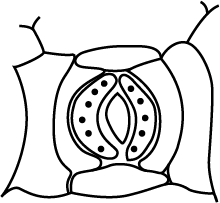
Why do veins have thin walls as compared to arteries?
In each of the following situations what happens to the rate of photosynthesis?a) Cloudy daysb) No rainfall in the areac) Good manuring in the area
Fill in the blanks with suitable words.
Diaphragm forms the ______ of the chest cavity.
If a plant is releasing carbon dioxide and taking in oxygen during the day, does it mean that there is no photosynthesis occurring? Justify your answer.
What is the special feature present in a human heart that does not allow the mixing of oxygen-rich and carbon dioxide-rich blood, when they reach the heart?
Find the odd one out
Trachea, Alveoli, Diaphragm, Capillaries.
Trachea, Alveoli, Diaphragm, Capillaries.
Your neighboring uncle has been diagnosed with hypertension. What should he do to keep his blood pressure within normal range?
Explain in your own words with suitable example.
How is excretion in plants useful to human beings?
How is excretion in plants useful to human beings?
What will happen if platelets were absent in the blood?
A process in living organisms involving the production of ________, typically with the intake of _______ and the release of _________ from the oxidation of complex organic substances is called respiration.
Short answer
Write the main function of platelets.
What is diastolic blood pressure?
After respiration, energy is stored in which form?
What is respiration?
Which cells in blood facilitate exchange of gases?
What is hypertension?
What is normal blood pressure?
What is systolic blood pressure?
Write a short note on hypotension.
Explain the process of Photosynthesis.
Discuss in detail the factors affecting the process of photosynthesis
What is respiration? Define external and internal respiration.
Explain excretion in human being (figure not required).
What is blood pressure? How is it measured?
Given below is the diagrammatic representation of the excretory system. Answer the following questions:
Which part of kidney is connected to ureter?
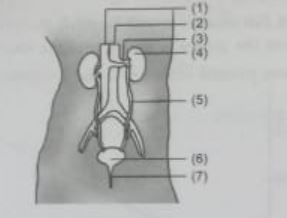
Draw a neat diagram of human respiratory system and label its following parts:
Rings of cartilage, lung, bronchi, alveolar sac
Write differences between systole and diastole.
(a) Draw a labelled diagram of a sectional view of the human heart.
(b) Describe double circulation in human beings. Why is it necessary?
(c) What would be the consequences of deficiency of haemoglobin in our body?
Name the three kinds of blood vessels of human circulatory system. Write the function of each.
What are the three main types of blood vessels in the body?
Briefly explain how transpiration helps in upward conduction of water in plants?
(a) .................................................................................
(b) .................................................................................
Draw a labelled diagram to show interrelationship between arteries, veins and capillaries.
(a) Draw a labelled diagram of human heart.
(b) What is the use of platelets in maintenance of human beings?
(c) Which respiratory pigment is found in red blood corpuscles present in human blood?
An apparatus shown alongside was set up in sunlight for about an hour. It was observed that drops of water appeared on the inside of the polythene bag.
Suppose the pot in this experiment was placed inside a room instead of placing it under sunlight. What difference would be noticed?
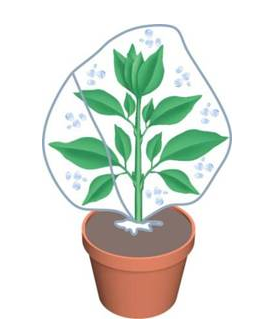
Describe an experiment to show that the plant loses water through its leaves.
Value based questions.
When an animal is wounded, its overall blood pressure rises, but the area in the vicinity of the wound swells as a result of local vasodilation. Why?
What is the mean arterial pressure in a person whose diastolic and systolic pressures are 160 and 100 mm Hg respectively?
Short / Long type answer type questions.
If your blood pressure is reported as 142 over 95, what are the diastolic, systolic, and pulse pressures? Does this mean that you have hypertension?
Oxygen is a waste product of photosynthesis. Comment.
Observe the pictures given below and tell the life process shown in each of these.
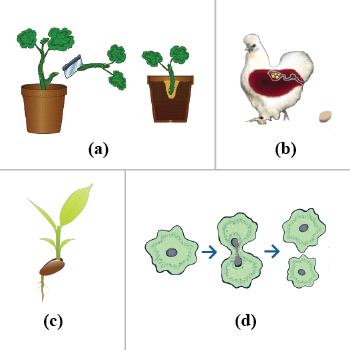
Rewrite and complete the following sentences by inserting the correct word in the space indicated.
The phenomenon of loss of water through a cut stem of injured part of plant is called ____.
Match the terms to these definitions:
Calvin cycle, chloroplast, cyclic electron pathway, electromagnetic spectrum, electron transport system, light-dependent reactions, photolysis, photon, photorespiration, photosynthesis, photosystem, RUBP (ribulose bisphosphate), thylakoid, Warburg effect, red drop, compensation point.
The process by which green plants convert the energy of sunlight into chemical energy which is then stored as carbohydrate is called?
The process by which green plants convert the energy of sunlight into chemical energy which is then stored as carbohydrate is called?
Name the pores in a leaf through which the exchange of respiratory gases takes place.
Explain the working of the heart.
Draw the diagram of sectional view of human heart and label the following parts
a. The chambers of the heart that pumps out deoxygenated blood.
b. The blood vessel that receives deoxygenated blood from the other parts of the body.
c. The blood vessel that carries away oxygenated blood from the heart.
d. Part which prevents the back flow of blood.
(a) Draw a labelled sectional view of human heart.
(b) State the functions of the following components of transport system:
(i) Blood (ii) Lymph
Match the items in Column I with those in Column II.
| Column I | Column II |
| A. Nasal chamber | (i) Production of voice |
| B. Epiglottis | (ii) C-shaped rings |
| C. Air sacs | (iii) Warms air |
| D. Lungs | (iv) Drives mucus |
| E. Larynx | (v) Closes wind-pipe during swallowing |
| F. Trachea | (vi) Network of capillaries |
| G. Cilia | (vii) Spongy and elastic |
